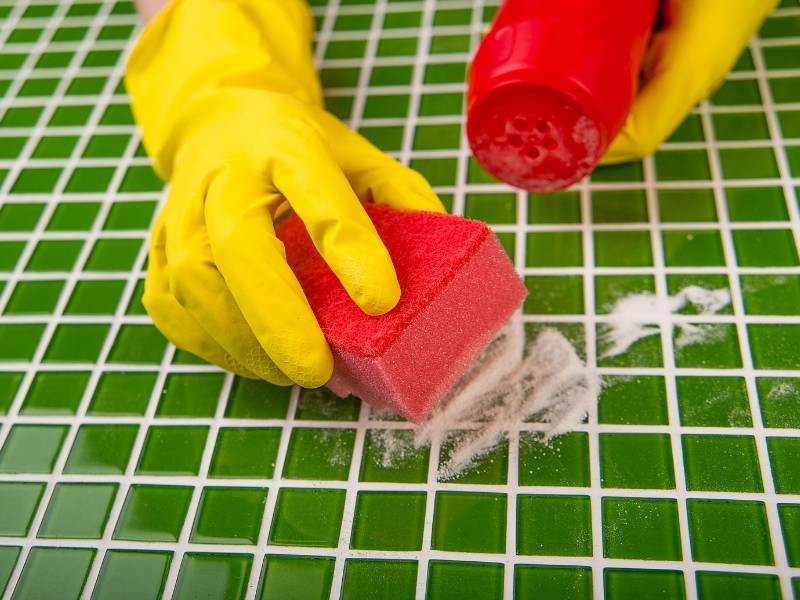Mold is a problem that plagues many modern households. In areas where moisture levels are high, like kitchens, bathrooms, and wet-rooms, the fungus can accumulate on tiled surfaces. This doesn’t just look hideous; it also releases harmful spores, which can pose a particularly egregious threat to those with preexisting respiratory conditions. Of course, dealing with mold on tile and grout is the most obvious issue in most homes.
Do you find yourself dealing with mold on your tile and grout? If so, continue reading to learn what you need to know to deal with this common household maintenance issue.
What to do About Mold on Tile and Grout

How common is mold on tile and grout?
In 2019, Rentokil Property Care released research that indicated that around 5.8 million British renters experience mold in their homes, including black spots on the walls. Of these, more than two-fifths had no extractor fan in the bathroom – which suggests that the number could easily go down with a few simple measures. Moreover, these figures don’t account for people who don’t rent – so it’s fair to suppose that the true figure for the broader population is a little higher.
How can the problem be prevented?
Anything that we can do to remove moisture from the property is going to limit the likelihood and extent of mold forming. The extractor fan in your kitchen and bathroom should be used to suck steam directly outside the room. You might equally open a window – but this is a sub-optimal solution, especially during winter. Equally, an electric dehumidifier can work wonders, but you’ll need to leave it outside the bathroom door.
You might also find decoration products, like paint and grout, which come with built-in anti-mold properties. The right floor-tile adhesive can protect a bathroom for years, even in busy households where the shower and bathroom are in regular use.
How can the problem be treated?
Getting rid of mold on tile and grout requires the right cleaning formula and a little bit of elbow grease. You might dilute bleach and spray it straight onto the tiling, or use a toothbrush to scrub the affected area of grout directly.
Bleach isn’t an ideal solution when it comes to colored tiles and grout, and so you can only do this a few times before it becomes necessary to replace the grout – or the tiles themselves. An alternative approach comes from baking soda, which will kill mold (albeit not quite as remorselessly as bleach does.) since the substance is alkali, it isn’t as abrasive – but it will still remove mold effectively. White vinegar is another alternative to bleach, but one that’s acidic. In either case, it’s a good idea to dilute the chemical with a little water before applying.
Alternatively, you might look into a chemical cleaner that’s been formulated specially to deal with mold. When handling chemicals of this sort, ventilation and PPE are especially important. Make sure that your hands and eyes are protected – getting bleach in your eyes isn’t much fun.
Regular wiping of wet surfaces will also help to reduce moisture, especially if everyone in the home gets into the habit of doing it.
If you have any suggestions or questions, please leave them in the comments below. Also below are links for more informative articles about ALL things DESIGN for your home or business.
Images Courtesy of Canva.
Other Posts You Might Enjoy:
First Impressions Count: 4 Essential Commercial Property Maintenance Tips
The Ultimate Guide to Home Maintenance
4 Important Tips for Your Commercial Building Maintenance in Texas





